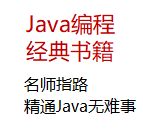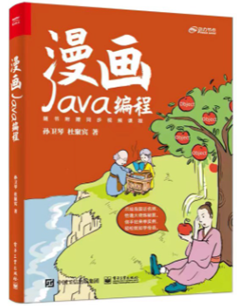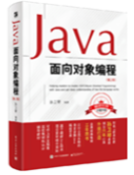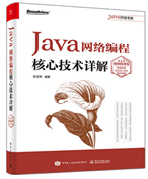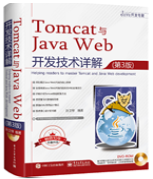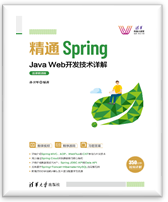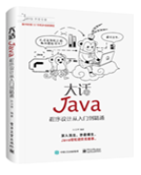|
|
CompletableFuture类实现了CompletionStage和Future接口。Future是Java 5添加的类,用来描述一个异步计算的结果,但是获取一个结果时方法较少,要么通过轮询isDone,确认完成后,调用get()获取值,要么调用get()设置一个超时时间。但是这个get()方法会阻塞住调用线程,这种阻塞的方式显然和我们的异步编程的初衷相违背。
为了解决这个问题,JDK吸收了guava的设计思想,加入了Future的诸多扩展功能形成了CompletableFuture。
CompletionStage是一个接口,从命名上看得知是一个完成的阶段,它里面的方法也标明是在某个运行阶段得到了结果之后要做的事情。
进行变换
public <U> CompletionStage<U> thenApply(Function<? super T,? extends U> fn);
public <U> CompletionStage<U> thenApplyAsync(Function<? super T,? extends U> fn);
public <U> CompletionStage<U> thenApplyAsync(Function<? super T,? extends U> fn,Executor executor); |
首先说明一下已Async结尾的方法都是可以异步执行的,如果指定了线程池,会在指定的线程池中执行,如果没有指定,默认会在ForkJoinPool.commonPool()中执行,下文中将会有好多类似的,都不详细解释了。关键的入参只有一个Function,它是函数式接口,所以使用Lambda表示起来会更加优雅。它的入参是上一个阶段计算后的结果,返回值是经过转化后结果。
例如:
@Test
public void thenApply() {
String result = CompletableFuture.supplyAsync(() -> "hello").thenApply(s -> s + " world").join();
System.out.println(result);
} |
结果为:
hello world
进行消耗
public CompletionStage<Void> thenAccept(Consumer<? super T> action);
public CompletionStage<Void> thenAcceptAsync(Consumer<? super T> action);
public CompletionStage<Void> thenAcceptAsync(Consumer<? super T> action,Executor executor) |
;
thenAccept是针对结果进行消耗,因为他的入参是Consumer,有入参无返回值。
例如:
@Test
public void thenAccept(){
CompletableFuture.supplyAsync(() -> "hello").thenAccept(s -> System.out.println(s+" world"));
} |
结果为:
hello world
对上一步的计算结果不关心,执行下一个操作。
public CompletionStage<Void> thenRun(Runnable action);
public CompletionStage<Void> thenRunAsync(Runnable action);
public CompletionStage<Void> thenRunAsync(Runnable action,Executor executor); |
thenRun它的入参是一个Runnable的实例,表示当得到上一步的结果时的操作。
例如:
@Test
public void thenRun(){
CompletableFuture.supplyAsync(() -> {
try {
Thread.sleep(2000);
} catch (InterruptedException e) {
e.printStackTrace();
}
return "hello";
}).thenRun(() -> System.out.println("hello world"));
while (true){}
} |
结果为:
hello world
4.结合两个CompletionStage的结果,进行转化后返回
public <U,V> CompletionStage<V> thenCombine(CompletionStage<? extends U> other,BiFunction<? super T,? super U,? extends V> fn);
public <U,V> CompletionStage<V> thenCombineAsync(CompletionStage<? extends U> other,BiFunction<? super T,? super U,? extends V> fn);
public <U,V> CompletionStage<V> thenCombineAsync(CompletionStage<? extends U> other,BiFunction<? super T,? super U,? extends V> fn,Executor executor); |
它需要原来的处理返回值,并且other代表的CompletionStage也要返回值之后,利用这两个返回值,进行转换后返回指定类型的值。
例如:
@Test
public void thenCombine() {
String result = CompletableFuture.supplyAsync(() -> {
try {
Thread.sleep(2000);
} catch (InterruptedException e) {
e.printStackTrace();
}
return "hello";
}).thenCombine(CompletableFuture.supplyAsync(() -> {
try {
Thread.sleep(3000);
} catch (InterruptedException e) {
e.printStackTrace();
}
return "world";
}), (s1, s2) -> s1 + " " + s2).join();
System.out.println(result);
} |
结果为:
hello world
结合两个CompletionStage的结果,进行消耗
public <U> CompletionStage<Void> thenAcceptBoth(CompletionStage<? extends U> other,BiConsumer<? super T, ? super U> action);
public <U> CompletionStage<Void> thenAcceptBothAsync(CompletionStage<? extends U> other,BiConsumer<? super T, ? super U> action);
public <U> CompletionStage<Void> thenAcceptBothAsync(CompletionStage<? extends U> other,BiConsumer<? super T, ? super U> action, Executor executor); |
它需要原来的处理返回值,并且other代表的CompletionStage也要返回值之后,利用这两个返回值,进行消耗。
例如:
@Test
public void thenAcceptBoth() {
CompletableFuture.supplyAsync(() -> {
try {
Thread.sleep(2000);
} catch (InterruptedException e) {
e.printStackTrace();
}
return "hello";
}).thenAcceptBoth(CompletableFuture.supplyAsync(() -> {
try {
Thread.sleep(3000);
} catch (InterruptedException e) {
e.printStackTrace();
}
return "world";
}), (s1, s2) -> System.out.println(s1 + " " + s2));
while (true){}
} |
结果为:
hello world
在两个CompletionStage都运行完执行。
public CompletionStage<Void> runAfterBoth(CompletionStage<?> other,Runnable action);
public CompletionStage<Void> runAfterBothAsync(CompletionStage<?> other,Runnable action);
public CompletionStage<Void> runAfterBothAsync(CompletionStage<?> other,Runnable action,Executor executor); |
不关心这两个CompletionStage的结果,只关心这两个CompletionStage执行完毕,之后在进行操作(Runnable)。
例如:
@Test
public void runAfterBoth(){
CompletableFuture.supplyAsync(() -> {
try {
Thread.sleep(2000);
} catch (InterruptedException e) {
e.printStackTrace();
}
return "s1";
}).runAfterBothAsync(CompletableFuture.supplyAsync(() -> {
try {
Thread.sleep(3000);
} catch (InterruptedException e) {
e.printStackTrace();
}
return "s2";
}), () -> System.out.println("hello world"));
while (true){}
} |
结果为
hello world
6.两个CompletionStage,谁计算的快,我就用那个CompletionStage的结果进行下一步的转化操作。
public <U> CompletionStage<U> applyToEither(CompletionStage<? extends T> other,Function<? super T, U> fn);
public <U> CompletionStage<U> applyToEitherAsync(CompletionStage<? extends T> other,Function<? super T, U> fn);
public <U> CompletionStage<U> applyToEitherAsync(CompletionStage<? extends T> other,Function<? super T, U> fn,Executor executor); |
我们现实开发场景中,总会碰到有两种渠道完成同一个事情,所以就可以调用这个方法,找一个最快的结果进行处理。
例如:
@Test
public void applyToEither() {
String result = CompletableFuture.supplyAsync(() -> {
try {
Thread.sleep(3000);
} catch (InterruptedException e) {
e.printStackTrace();
}
return "s1";
}).applyToEither(CompletableFuture.supplyAsync(() -> {
try {
Thread.sleep(2000);
} catch (InterruptedException e) {
e.printStackTrace();
}
return "hello world";
}), s -> s).join();
System.out.println(result);
} |
结果为:
hello world
两个CompletionStage,谁计算的快,我就用那个CompletionStage的结果进行下一步的消耗操作。
public CompletionStage<Void> acceptEither(CompletionStage<? extends T> other,Consumer<? super T> action);
public CompletionStage<Void> acceptEitherAsync(CompletionStage<? extends T> other,Consumer<? super T> action);
public CompletionStage<Void> acceptEitherAsync(CompletionStage<? extends T> other,Consumer<? super T> action,Executor executor); |
例如:
@Test
public void acceptEither() {
CompletableFuture.supplyAsync(() -> {
try {
Thread.sleep(3000);
} catch (InterruptedException e) {
e.printStackTrace();
}
return "s1";
}).acceptEither(CompletableFuture.supplyAsync(() -> {
try {
Thread.sleep(2000);
} catch (InterruptedException e) {
e.printStackTrace();
}
return "hello world";
}), System.out::println);
while (true){}
} |
结果为:
hello world
两个CompletionStage,任何一个完成了都会执行下一步的操作(Runnable)。
public CompletionStage<Void> runAfterEither(CompletionStage<?> other,Runnable action);
public CompletionStage<Void> runAfterEitherAsync(CompletionStage<?> other,Runnable action);
public CompletionStage<Void> runAfterEitherAsync(CompletionStage<?> other,Runnable action,Executor executor); |
例如:
@Test
public void runAfterEither() {
CompletableFuture.supplyAsync(() -> {
try {
Thread.sleep(3000);
} catch (InterruptedException e) {
e.printStackTrace();
}
return "s1";
}).runAfterEither(CompletableFuture.supplyAsync(() -> {
try {
Thread.sleep(2000);
} catch (InterruptedException e) {
e.printStackTrace();
}
return "s2";
}), () -> System.out.println("hello world"));
while (true) {
}
} |
结果为:
hello world
当运行时出现了异常,可以通过exceptionally进行补偿。
public CompletionStage<T> exceptionally(Function<Throwable, ? extends T> fn);
例如:
@Test
public void exceptionally() {
String result = CompletableFuture.supplyAsync(() -> {
try {
Thread.sleep(3000);
} catch (InterruptedException e) {
e.printStackTrace();
}
if (1 == 1) {
throw new RuntimeException("测试一下异常情况");
}
return "s1";
}).exceptionally(e -> {
System.out.println(e.getMessage());
return "hello world";
}).join();
System.out.println(result);
}
结果为:
java.lang.RuntimeException: 测试一下异常情况
hello world
当运行完成时,对结果的记录。这里的完成时有两种情况,一种是正常执行,返回值。另外一种是遇到异常抛出造成程序的中断。这里为什么要说成记录,因为这几个方法都会返回CompletableFuture,当Action执行完毕后它的结果返回原始的CompletableFuture的计算结果或者返回异常。所以不会对结果产生任何的作用。
public CompletionStage<T> whenComplete(BiConsumer<? super T, ? super Throwable> action);
public CompletionStage<T> whenCompleteAsync(BiConsumer<? super T, ? super Throwable> action);
public CompletionStage<T> whenCompleteAsync(BiConsumer<? super T, ? super Throwable> action,Executor executor); |
例如:
@Test
public void whenComplete() {
String result = CompletableFuture.supplyAsync(() -> {
try {
Thread.sleep(3000);
} catch (InterruptedException e) {
e.printStackTrace();
}
if (1 == 1) {
throw new RuntimeException("测试一下异常情况");
}
return "s1";
}).whenComplete((s, t) -> {
System.out.println(s);
System.out.println(t.getMessage());
}).exceptionally(e -> {
System.out.println(e.getMessage());
return "hello world";
}).join();
System.out.println(result);
} |
结果为:
null
java.lang.RuntimeException: 测试一下异常情况
java.lang.RuntimeException: 测试一下异常情况
hello world
这里也可以看出,如果使用了exceptionally,就会对最终的结果产生影响,它没有口子返回如果没有异常时的正确的值,这也就引出下面我们要介绍的handle。
运行完成时,对结果的处理。这里的完成时有两种情况,一种是正常执行,返回值。另外一种是遇到异常抛出造成程序的中断。
public <U> CompletionStage<U> handle(BiFunction<? super T, Throwable, ? extends U> fn);
public <U> CompletionStage<U> handleAsync(BiFunction<? super T, Throwable, ? extends U> fn);
public <U> CompletionStage<U> handleAsync(BiFunction<? super T, Throwable, ? extends U> fn,Executor executor); |
例如:
出现异常时
@Test
public void handle() {
String result = CompletableFuture.supplyAsync(() -> {
try {
Thread.sleep(3000);
} catch (InterruptedException e) {
e.printStackTrace();
}
//出现异常
if (1 == 1) {
throw new RuntimeException("测试一下异常情况");
}
return "s1";
}).handle((s, t) -> {
if (t != null) {
return "hello world";
}
return s;
}).join();
System.out.println(result);
} |
结果为:
hello world
未出现异常时
@Test
public void handle() {
String result = CompletableFuture.supplyAsync(() -> {
try {
Thread.sleep(3000);
} catch (InterruptedException e) {
e.printStackTrace();
}
return "s1";
}).handle((s, t) -> {
if (t != null) {
return "hello world";
}
return s;
}).join();
System.out.println(result);
} |
结果为:
s1
上面就是CompletionStage接口中方法的使用实例,CompletableFuture同样也同样实现了Future,所以也同样可以使用get进行阻塞获取值,总的来说,CompletableFuture使用起来还是比较爽的,看起来也比较优雅一点。
转自:https://blog.csdn.net/mrxiky/article/details/78962614
程序猿的技术大观园:www.javathinker.net
|
|

